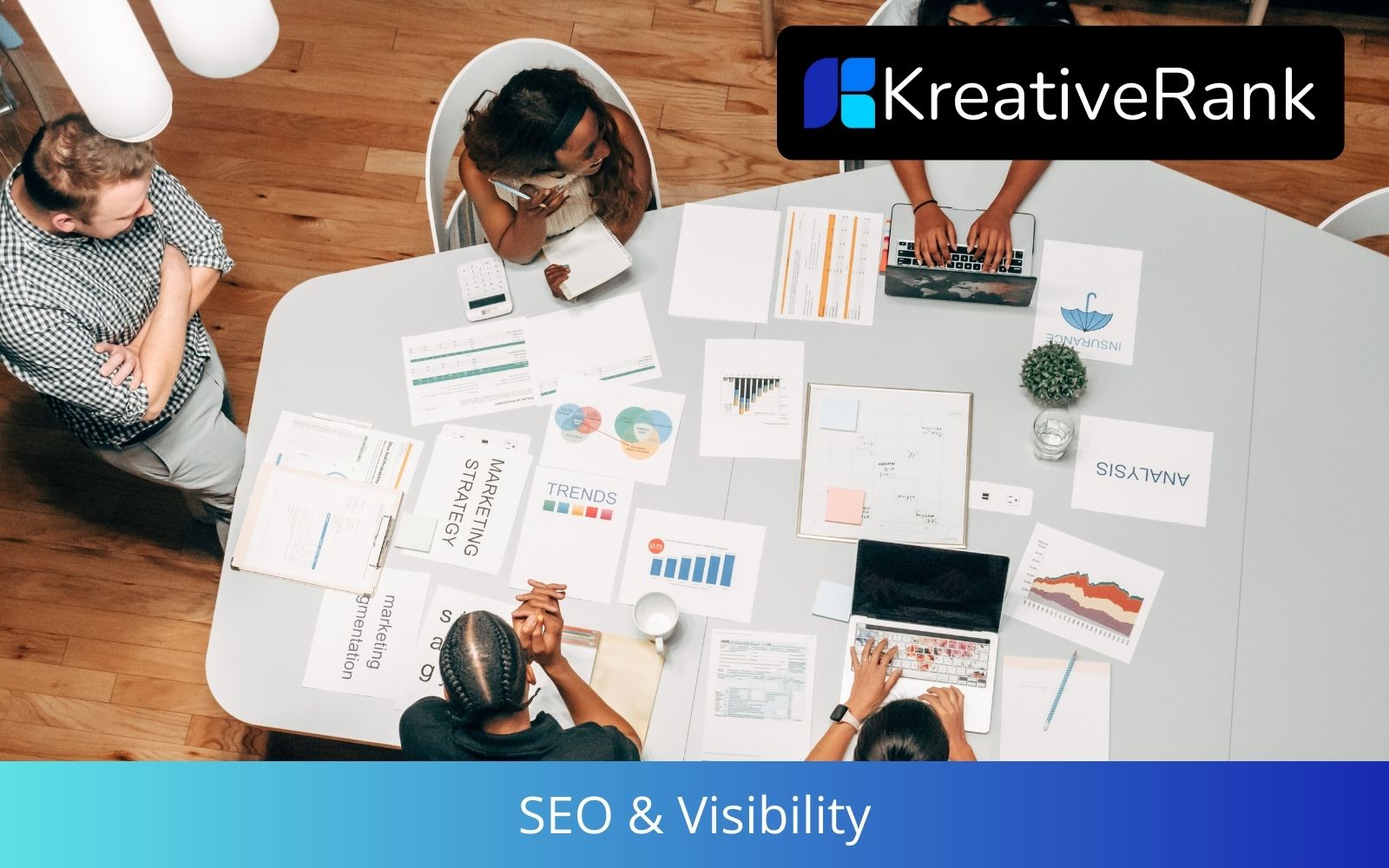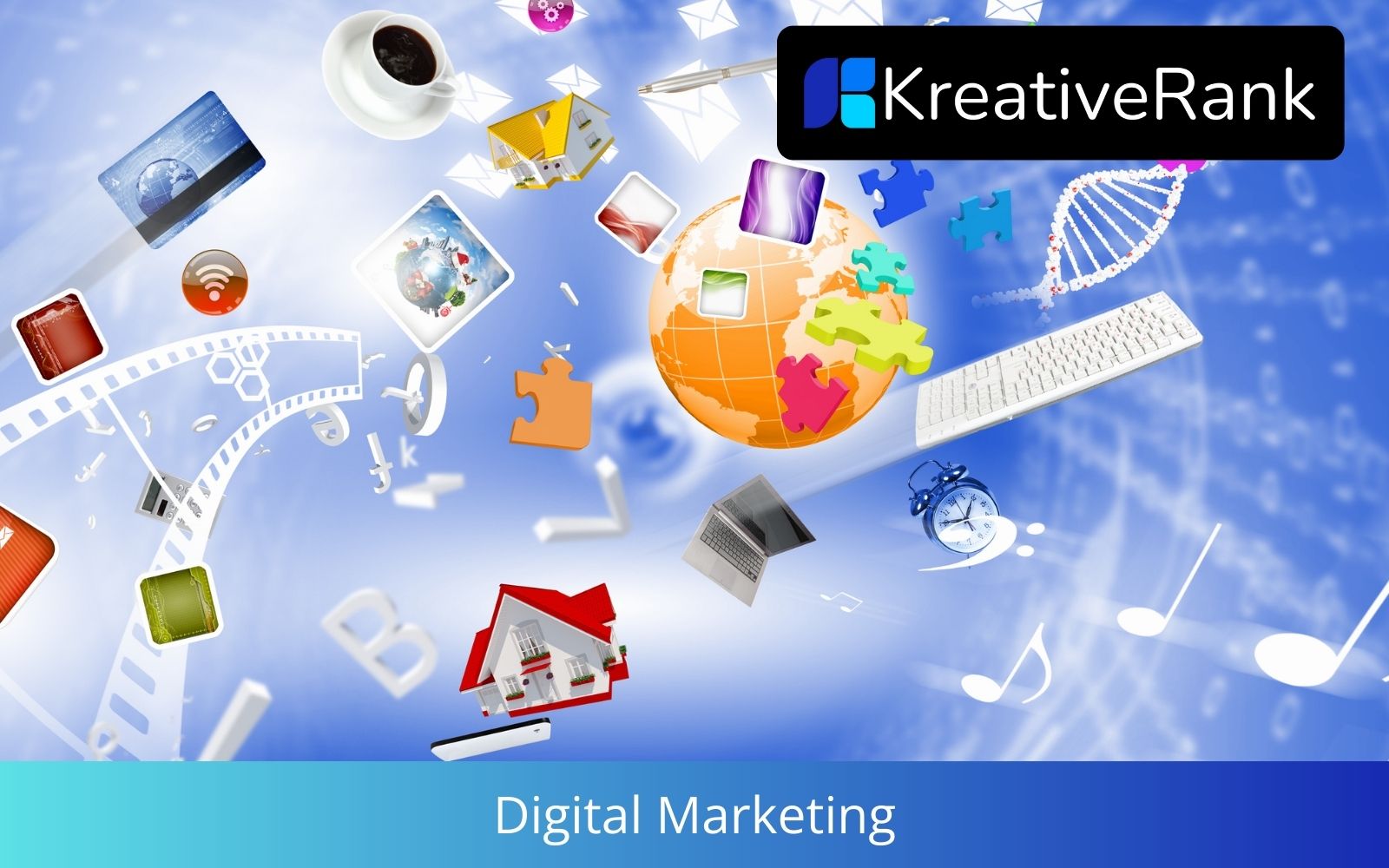Introduction
Have you ever visited a website with high expectations, only to become disoriented or frustrated due to unclear navigation and ambiguous messaging? You may have noticed that certain websites effectively direct users to suitable products with ease, while others present a more complex and confusing navigation experience. If you run a business, this is a real concern. The effectiveness of your website can make or break that all-important first impression.
At Kreative Rank, we build websites that work strategically for your business. Our approach focuses on turning your digital presence into a clear pathway to success.
In this article, we’ll explore what it means to build a website that works for your business, not just visually, but strategically too. We’ll explore how to align your site’s design and functionality with your business goals, identify the essential features every business website should have, and discuss how to approach ongoing improvement to keep your digital presence open and welcoming.
Whether you’re starting from scratch, revamping an existing site, or just looking for inspiration to turn browsers into loyal customers, stick around. Drawing from our experience with website solutions, let’s help you build a website that earns its keep!
Understanding Your Business Needs
No two businesses are alike. That’s why no single website template fits all. The first, and perhaps most overlooked step, is pausing to understand your business, its audience, mission, and unique selling proposition.
Pinpointing Your Business Goals
Start by asking
- What is the primary purpose of your website? (E.g., generate leads, sell products, showcase work)
- Who is your target audience?
- What actions do you want visitors to take?
- How will you measure success? (Contact form submissions, sales, newsletter signups, etc.)
This goal-oriented approach sets the foundation for every design and content choice that follows.
Example: Local Bakery vs. IT Consultancy
A local bakery might want to feature daily specials and an easy-to-update events calendar. An IT consultancy, on the other hand, might prioritize service descriptions, case studies, and a streamlined contact process. Let these goals guide the blueprint of your website.
” The most successful business websites are designed with a clear purpose and audience in mind, not just for visual appeal.”
Building Blocks of an Effective Business Website
With clarity around your goals, it’s time to focus on structure and essential features. Here are the core components your site should include:
Clear Navigation and Structure
Your navigation menu acts as the map for your visitors. Keep it simple:
- Place the most important pages (Home, About, Services/Products, Contact) in easy reach.
- Use clear and understandable labels. avoid clever names that might confuse newcomers.
A good rule of thumb: If a visitor can’t find what they’re looking for in under three clicks, it’s time to simplify.
Responsive and Mobile-Friendly Design
With over half of web traffic now coming from mobile devices (Statista, 2023), it’s non-negotiable for your website to look and function well on all screen sizes. Tools like Google’s Mobile-Friendly Test can help you evaluate and improve compatibility.
Compelling Content That Connects
There’s a saying in web design: “Content is king.” But more than just text, your content should serve your customers’ needs and encourage engagement.
Tips for Strong Website Content
- Use conversational, clear language, write as if you’re explaining your offerings to a friend.
- Break up text with headings, visuals, and bullet points for easier reading.
- Include calls-to-action (CTAs) that guide visitors toward your desired goal, like “Book a Consultation” or “See Our Menu”.
Contact Options and Trust Signals
Customers trust businesses that can be easily reached and verified.
- Offer multiple contact methods: forms, emails, phone numbers, and social links.
- Display testimonials, certifications, awards, or links to positive reviews when appropriate.
Fast Load Times and Reliable Performance
A slow website is a silent killer. According to research by Google, 53% of mobile site visitors leave a page that takes longer than 3 seconds to load (Think with Google). Optimize your images, reduce unnecessary scripts, and work with reputable hosting providers to ensure smooth service.
Customization: Going Beyond the Template
While website builders and templates are more powerful than ever, genuine business impact often comes from personalized touches.
Integrations and Tools
Depending on your business, you may need:
- E-commerce integrations (Shopify, WooCommerce)
- Booking or appointment systems
- Email marketing and CRM tools (Mailchimp, HubSpot)
- Analytics dashboards (Google Analytics, Hotjar)
Choose only what you’ll use, complexity can breed confusion, both for you and your customers.
Visual Branding That Reflects Your Identity
Your logo, colors, imagery, and tone of voice should consistently express who you are and what makes you unique. Hiring a designer or using brand guidelines can help ensure that your website feels uniquely yours, not just another template.
Ongoing Improvement and Real-World Feedback
Launching your site isn’t the finish line, it’s the starting point. Websites thrive when they are nurtured and adapted based on real usage and feedback.
Setting Up Analytics
Basic analytics tools can show:
- Visitor numbers and traffic sources
- Most-visited (and most-exited) pages
- Conversion rates for your core actions
By reviewing these stats regularly, you’ll spot opportunities for refinement.
Gathering Customer Feedback
Sometimes, the most valuable insights come from those who use your site every day. Consider:
- Quick on-site surveys (“Was this page helpful?”)
- Follow-up emails after purchases or inquiries
- Direct outreach to select customers for their honest opinions
This helps identify sticking points and areas for user-friendly improvement.
Common Pitfalls (and How to Avoid Them)
Learning from others’ mistakes can save you time, money, and frustration.
Over complicating the Design
Fancy animations and too many pop-ups may seem impressive but often distract rather than engage. Focus on clarity and user experience above all.
Neglecting Accessibility
Your website should be accessible to everyone, including people with disabilities. Ensure readable font sizes, good color contrast, and logical navigation. Tools like
(WAVE Web Accessibility Tool) can assist.
Conclusion
Website solutions aren’t one-size-fits-all. The best sites are those that truly reflect your business goals, understand your audience, and adapt over time. By starting with a clear sense of purpose, investing in thoughtful design and content, and committing to ongoing improvement, you can create a website that works for you, day in and day out.
Review your business’s website to determine whether it effectively meets both your organizational needs and those of your customers. If not, now’s as good a time as any to start building a site that does.
At KreativeRank, we’re committed to helping businesses create websites that truly earn their keep. If you’re interested in diving deeper or need tailored advice for your specific situation, explore more of our guides or [get in touch with our team] for a personal consultation. Let’s build something that works strategically for your business.
“A website isn’t just an online brochure – it’s the digital handshake between you and your customers.”




